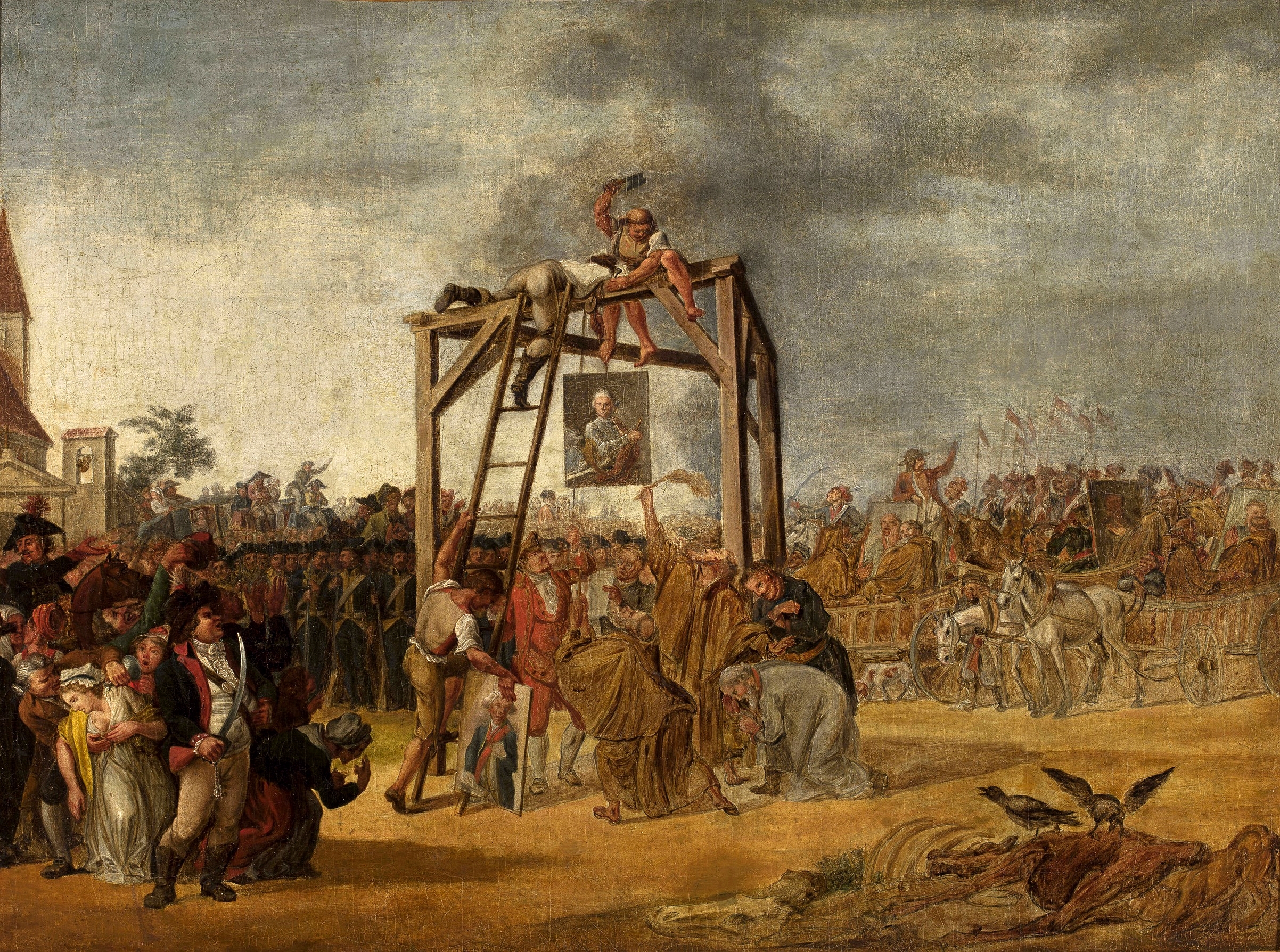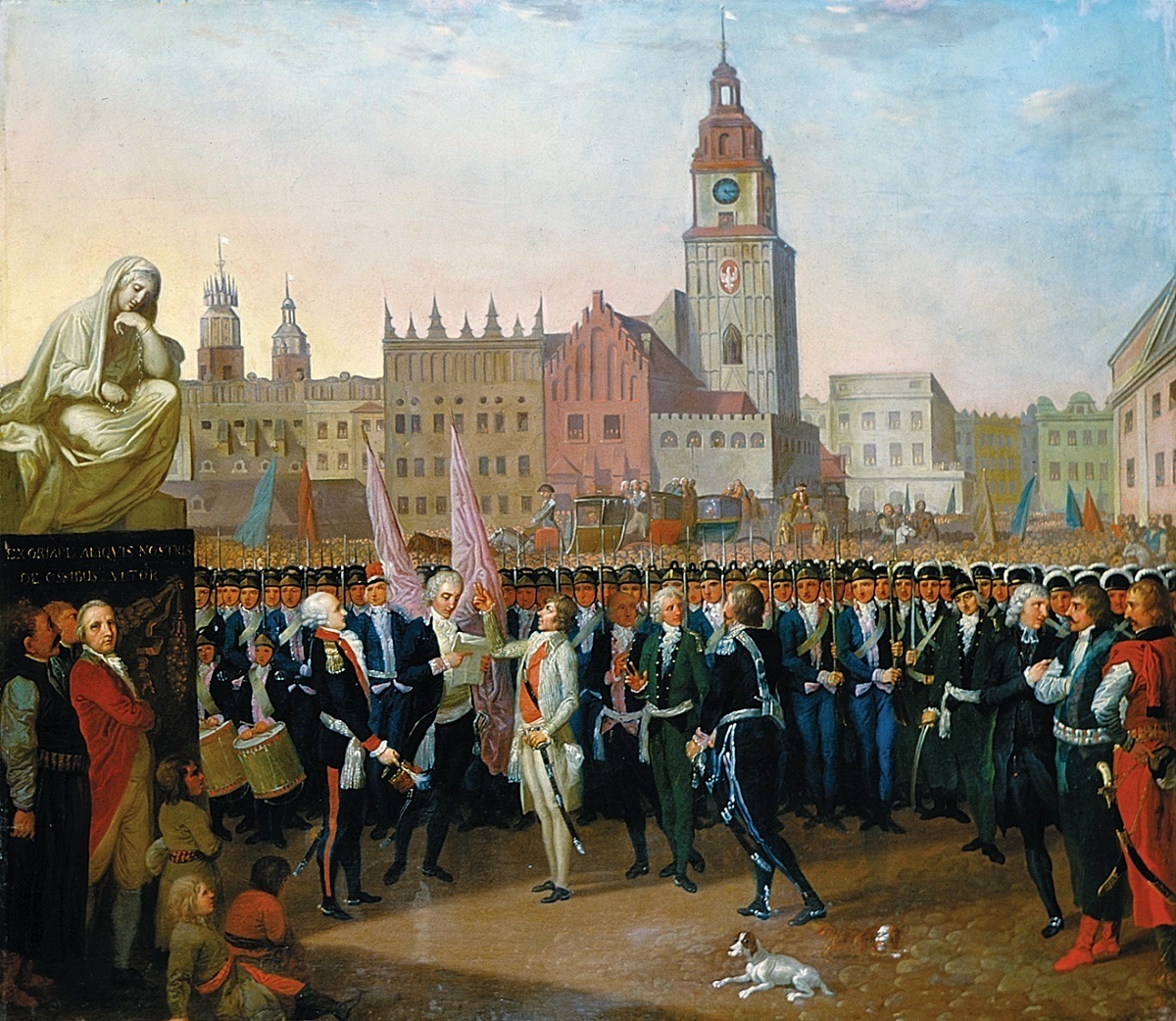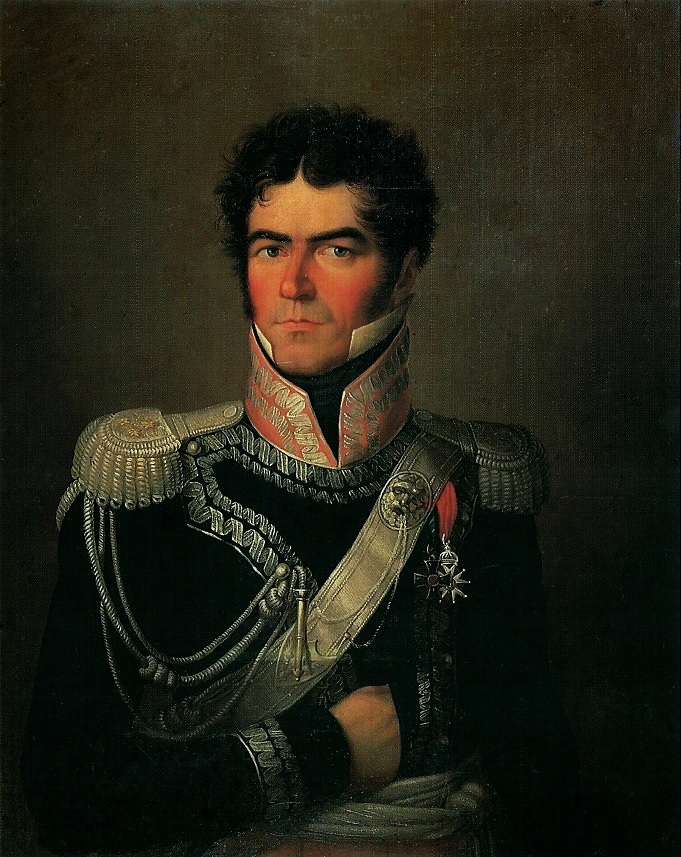|
Julia Lubomirska (1764–1794)
Princess Julia Lubomirska (1764 – 22 August 1794) was a Polish noblewoman, known for her love life. She was the daughter of Izabela Lubomirska, one of the richest people in the Commonwealth and cousin of the king Stanislaus Augustus, and the Grand Marshal of the Crown Stanisław Lubomirski. She was considered one of the most beautiful Polish women of her time, for which she was called "Giulietta la bella". In 1785 in Wilanów, she married Jan Nepomucen Potocki, travel writer best known for his novel ''The Manuscript Found in Saragossa'' and for being the first person in Poland to fly on a hot-air balloon. Soon after the wedding they went together to Italy, France, Britain, and the Netherlands for three years. During this time, she gave birth to Alfred and Artur while staying with her mother. They returned in 1788, when Jan became an envoy at the Four-Year Sejm and Julia supported the Constitution of 3 May. It was during this time that she met Eustachy Erazm Sanguszko, also an ... [...More Info...] [...Related Items...] OR: [Wikipedia] [Google] [Baidu] |
Lubomirski
The House of Lubomirski is a Princely Houses of Poland, Polish princely family. The Lubomirski family's coat of arms is the Drużyna coat of arms, which is similar to the Szreniawa coat of arms but without a cross. Origin and the coat of arms The Lubomirski family have been actors in the history of Poland since the 10th century. There are two theories regarding the family's origin. One, by Adam Boniecki, a Polish heraldist, assumes that there were two branches of the family. One settled at the Szreniawa River in Proszowice County while the other established itself in Szczyrzyc County. The time of this division of the family is not known, but most likely it was before the adoption of Religion in Poland, Christianity by Poland. The Szreniawici family used a similar coat of arms, which means that the two families had the same ancestry. At the time of Mieszko I of Poland, Mieszko I, the members of the Lubomirski family demonstrated bravery in battle against paganism, pagans ... [...More Info...] [...Related Items...] OR: [Wikipedia] [Google] [Baidu] |
Constitution Of 3 May
The Constitution of 3 May 1791, titled the Government Act, was a written constitution for the Polish–Lithuanian Commonwealth that was adopted by the Great Sejm that met between 1788 and 1792. The Commonwealth was a dual monarchy comprising the Crown of the Kingdom of Poland and the Grand Duchy of Lithuania; the new constitution was intended to address political questions following a period of political agitation and gradual reform that began with the Convocation Sejm of 1764 and the election that year of the Commonwealth's last monarch, Stanisław August Poniatowski. It was the first codified, modern constitution (possessing checks and balances and a tripartite separation of powers) in Europe and the second in the world, after that of the United States. The Constitution sought to implement a more effective constitutional monarchy, introduced political equality between townspeople and nobility, and placed the peasants under the government's protection, mitigating the worst ab ... [...More Info...] [...Related Items...] OR: [Wikipedia] [Google] [Baidu] |
1794 Deaths
Events January–March * January 1 – The Stibo Group is founded by Niels Lund as a printing company in Aarhus (Denmark). * January 13 – The U.S. Congress enacts a law providing for, effective May 1, 1795, a United States flag of 15 stars and 15 stripes, in recognition of the recent admission of Vermont and Kentucky as the 14th and 15th states. A subsequent act restores the number of stripes to 13, but provides for additional stars upon the admission of each additional state. * January 21 – King George III of Great Britain delivers the speech opening Parliament and recommends a continuation of Britain's war with France. * February 4 – French Revolution: The National Convention of the French First Republic abolishes slavery. * February 8 – Wreck of the Ten Sail on Grand Cayman. * February 11 – The first session of the United States Senate is open to the public. * March 4 – The Eleventh Amendment to the United States Constit ... [...More Info...] [...Related Items...] OR: [Wikipedia] [Google] [Baidu] |
1764 Births
Events January–June * January 7 – The Siculicidium is carried out as hundreds of the Székelys, Székely minority in Transylvania are massacred by the Habsburg monarchy, Austrian Army at Madéfalva. * January 19 – John Wilkes is expelled from the House of Commons of Great Britain, for seditious libel. * February 15 – The settlement of St. Louis is established. * March 15 – The day after his return to Paris from a nine-year mission, French explorer and scholar Anquetil Du Perron presents a complete copy of the Zoroastrianism, Zoroastrian sacred text, the ''Zend Avesta'', to the Bibliothèque nationale de France, ''Bibliothèque Royale'' in Paris, along with several other traditional texts. In 1771, he publishes the first European translation of the ''Zend Avesta''. * March 17 – Francisco Javier de la Torre arrives in Manila to become the new Spanish Governor-General of the Philippines. * March 20 – After the British victory in the ... [...More Info...] [...Related Items...] OR: [Wikipedia] [Google] [Baidu] |
Biała Dama
Biała Dama is an unflavored vodka produced by Polmos Łańcut. According to its producer it has delicate, unobtrusive aromatic note of neutral grain spirits. It contains 40% alcohol by volume. The vodka has a tradition of more than 200 years. ''Biała Dama'' ( pl: ''White Lady'') refers to a ghost of Julia Potocka, whose mother established the distillery in Łańcut. See also * Vodka * Distilled beverage * Polmos Łańcut * List of vodkas This is a list of vodka brands. Vodka is a distilled beverage composed primarily of water and ethanol, sometimes with traces of impurities and flavorings. Vodka is made by the distillation of fermented substances such as grains, potatoes, or some ... External links Polmos Łańcut Polish vodkas {{Poland-cuisine-stub ... [...More Info...] [...Related Items...] OR: [Wikipedia] [Google] [Baidu] |
Monarchy Of Liechtenstein
The monarchy of Liechtenstein is the constitutional form of government by which a hereditary sovereign reigns as the head of state of Liechtenstein. The current monarch is Prince Hans-Adam II. The House of Liechtenstein, after which the sovereign principality was named in 1719, hails from Liechtenstein Castle in Lower Austria, which the family possessed from the middle of the twelfth century to the thirteenth century, and from 1807 onward. It is the only remaining European monarchy that practises strict agnatic primogeniture. History Through the centuries, the dynasty acquired vast swathes of land, predominantly in Moravia, Lower Austria, Silesia, and Styria, though in all cases, these territories were held in fief under other more senior feudal lords, particularly under various lines of the Habsburg family, to whom several Liechtenstein princes served as close advisors. Without any territory held immediately from the Imperial crown, the Liechtenstein family, although ... [...More Info...] [...Related Items...] OR: [Wikipedia] [Google] [Baidu] |
Tadeusz Kościuszko
Andrzej Tadeusz Bonawentura Kościuszko (; 4 or 12 February 174615 October 1817) was a Polish Military engineering, military engineer, statesman, and military leader who then became a national hero in Poland, the United States, Lithuania, and Belarus. He fought in the Polish–Lithuanian Commonwealth's struggles against Russian Empire, Russia and Kingdom of Prussia, Prussia, and on the U.S. side in the American Revolutionary War. As Supreme Commander of the Polish National Armed Forces, he led the 1794 Kościuszko Uprising. Kościuszko was born in February 1746, in a manor house on the Mieračoŭščyna, Mereczowszczyzna estate in Brest Litovsk Voivodeship, then Grand Duchy of Lithuania, a part of the Polish–Lithuanian Commonwealth, now the Ivatsevichy District of Belarus. At age 20, he graduated from the Corps of Cadets (Warsaw), Corps of Cadets in Warsaw, Poland. After the start of the War of the Bar Confederation in 1768, Kościuszko moved to France in 1769 to study. He r ... [...More Info...] [...Related Items...] OR: [Wikipedia] [Google] [Baidu] |
Targowica Confederation
The Targowica Confederation (, , ) was a confederation established by Polish and Lithuanian magnates on 27 April 1792, in Saint Petersburg, with the backing of the Russian Empress Catherine II. The confederation opposed the Constitution of 3 May 1791 and fought in the Polish–Russian War of 1792, which led to the Second and Third Partitions of Poland. History The Targowica confederation opposed the Constitution of 3 May 1791, which had been adopted by the Great Sejm, especially the provisions limiting the privileges of the nobility. The text of the founding act of the confederation was drafted by the Russian general Vasili Stepanovich Popov, Chief of Staff of Prince Grigori Alexandrovich Potemkin. Its purpose was proclaimed in the small town of Targowica and the Potocki's estate (now in Holovanivsk Raion in Kirovohrad Oblast, Ukraine) on May 14, 1792. Four days later two Russian armies invaded the Polish-Lithuanian Commonwealth without a formal declaration of war. The forces ... [...More Info...] [...Related Items...] OR: [Wikipedia] [Google] [Baidu] |
Kościuszko Uprising
The Kościuszko Uprising, also known as the Polish Uprising of 1794, Second Polish War, Polish Campaign of 1794, and the Polish Revolution of 1794, was an uprising against the Russian and Prussian influence on the Polish–Lithuanian Commonwealth, led by Tadeusz Kościuszko in Poland-Lithuania and the Prussian partition in 1794. It was a failed attempt to liberate the Polish–Lithuanian Commonwealth from external influence after the Second Partition of Poland (1793) and the creation of the Targowica Confederation. Background Decline of the Commonwealth By the early 18th century, the magnates of Poland and Lithuania controlled the state – or rather, they managed to ensure that no reforms would be carried out that might weaken their privileged status (the " Golden Freedoms"). Through the abuse of the '' liberum veto'' rule which enabled any deputy to paralyze the Sejm (Commonwealth's parliament) proceedings, deputies bribed by magnates or foreign powers or those sim ... [...More Info...] [...Related Items...] OR: [Wikipedia] [Google] [Baidu] |
Polish–Russian War Of 1792
The Polish–Russian War of 1792 (also, War of the Second Partition, and in Polish sources, War in Defence of the Constitution) was fought between the Polish–Lithuanian Commonwealth on one side, and the Targowica Confederation (conservative nobility of the Commonwealth opposed to the new Constitution of 3 May 1791) and the Russian Empire under Catherine the Great on the other. The war took place in two theaters: a northern in Lithuania and a southern in what is now Ukraine. In both, the Polish forces retreated before the numerically superior Russian forces, though they offered significantly more resistance in the south, thanks to the effective leadership of Polish commanders Prince Józef Poniatowski and Tadeusz Kościuszko. During the three-month-long struggle several battles were fought, but no side scored a decisive victory. The largest success of the Polish forces was the defeat of one of the Russian formations at the Battle of Zieleńce on 18 June; in the aftermath of ... [...More Info...] [...Related Items...] OR: [Wikipedia] [Google] [Baidu] |
Eustachy Erazm Sanguszko
Prince Eustachy Erazm Sanguszko (1768–1844) was a Polish Szlachta, nobleman, general, military commander, diplomat and politician. Early life Eustachy Erazm Sanguszko was born in 1768 to Hieronim Janusz Sanguszko and Cecylia Usrzula Potocka. French Royal army In the years 1780–1786, Sanguszko graduated from the military school of Strasbourg and served in the Régiment Royal-Allemand (together with Stanisław Mokronowski) of the French Royal Army (1652–1830), French Royal army. Polish-Lithuanian Commonwealth Four-Year Sejm On 3 February 1789, Sanguszko began service in the Crown of the Kingdom of Poland, Crown Army as a captain in the . On 5 October 1789, he was promoted to Major (rank), major, and on 28 April 1792, to vice-brigadier. He was a representative of the Lublin Voivodeship (1474–1795), Lublin Voivodeship in the Great Sejm of 1788–1792. Sanguszko partook in the Polish–Russian War of 1792, War of the Second Partition where he fought at the Ba ... [...More Info...] [...Related Items...] OR: [Wikipedia] [Google] [Baidu] |
Four-Year Sejm
The Great Sejm, also known as the Four-Year Sejm ( Polish: ''Sejm Wielki'' or ''Sejm Czteroletni''; Lithuanian: ''Didysis seimas'' or ''Ketverių metų seimas'') was a Sejm (parliament) of the Polish–Lithuanian Commonwealth that was held in Warsaw between 1788 and 1792. Its principal aim became to restore sovereignty to, and reform, the Commonwealth politically and economically. The Sejm's great achievement was the adoption of the Constitution of 3 May 1791, often described as Europe's first modern written national constitution, and the world's second, after the United States Constitution. The Polish Constitution was designed to redress long-standing political defects of the federative Polish-Lithuanian Commonwealth and its system of Golden Liberties. The Constitution introduced political equality between townspeople and nobility and placed the peasants under the protection of the government, thus mitigating the worst abuses of serfdom. The Constitution abolished pernicious ... [...More Info...] [...Related Items...] OR: [Wikipedia] [Google] [Baidu] |






